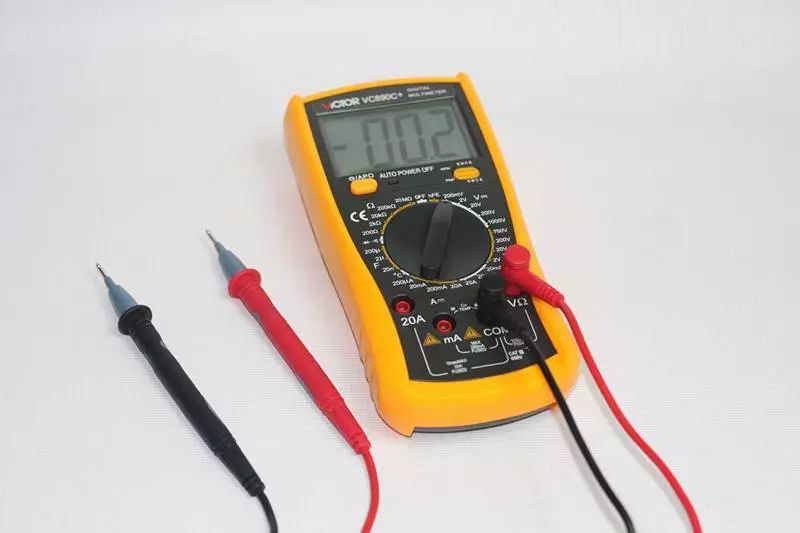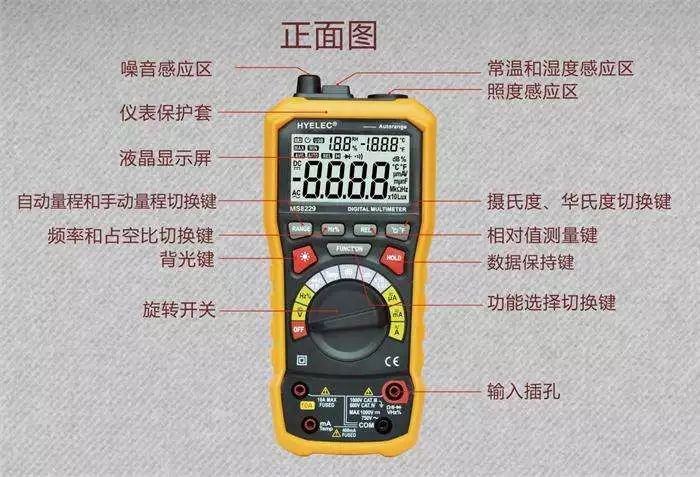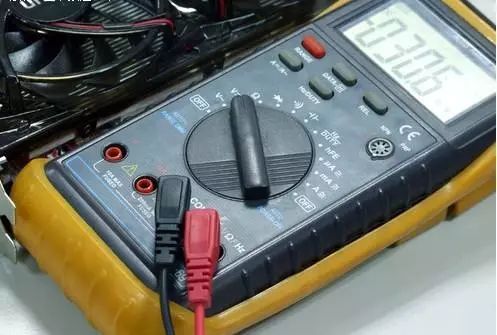 Click the “blue text” above to follow us
Click the “blue text” above to follow us
We all know that a multimeter is an essential maintenance tool for electrical workers. Proper use of a multimeter can not only make our work more efficient but also enhance our safety and effectiveness.

1. Before using the multimeter, perform a “mechanical zeroing”;
2. Do not touch the metal parts of the probes during measurement to ensure measurement accuracy and personal safety;
3. In complex environments, pay attention to the influence of external magnetic fields on the multimeter;
4. To improve measurement accuracy, try to keep the multimeter’s needle in the middle position during measurement. The range should be appropriate, with the needle deflected more than half. When selecting a range, if the size of the measured value is unknown, start with a larger range and gradually switch to a smaller range based on the deflection angle until the needle deflects to about 2/3 of the full scale;
5. When testing components with polarity, such as transistors and electrolytic capacitors, pay attention to the polarity relationship. Remember that the black probe is negative, and it connects to “+” inside the meter. The red probe is positive, and the black probe is negative, but in the resistance mode, the black probe connects to the positive terminal of the internal battery;
6. If the multimeter needs to change ranges, disconnect the probes first, then change the range before measuring. Do not change the range during measurement, especially when measuring high voltage (e.g., 220V) or large current (e.g., 0.5A), to avoid arcing and damaging the switch contacts. After measurement, set the range switch to the “•” position;

7. When measuring resistance, zeroing must be performed each time the range is changed. If zero cannot be achieved, replace the battery. For resistance measurement, first zero the meter, and when changing ranges, zero again. When measuring resistance, set the range switch to the resistance mode, short the two probes, and adjust the “Ω” zero potentiometer until the needle points to zero ohms before measuring. Each time the resistance range is changed, the ohm zero point should be readjusted;
8. After using the multimeter, set the range switch to the maximum AC voltage setting;
9. If not used for a long time, remove the internal battery to prevent corrosion of other components;
10. Always check the range before measuring. Each time you pick up the probes to prepare for measurement, be sure to double-check that the measurement category and range switch are set correctly. For safety, this habit must be developed;
11. The dial should be level, and readings must be aligned. When using the multimeter, it should be rotated horizontally, and the line of sight should be directly aligned with the needle;
12. Do not measure resistance while powered, and discharge capacitors before measuring. It is strictly forbidden to measure resistance in a powered circuit. When checking large capacitors in electrical equipment, discharge the capacitor before measuring;

13. To measure current, connect in series; to measure voltage, connect in parallel. When measuring current, the multimeter should be connected in series with the circuit being measured; when measuring voltage, the multimeter should be connected in parallel across the circuit;
14. Ensure correct polarity and develop a habit of using one hand. When measuring current and voltage, pay special attention to the polarity of the red and black probes to avoid incorrect connections, and always develop the habit of using one hand for safety.
I knew you were “watching”